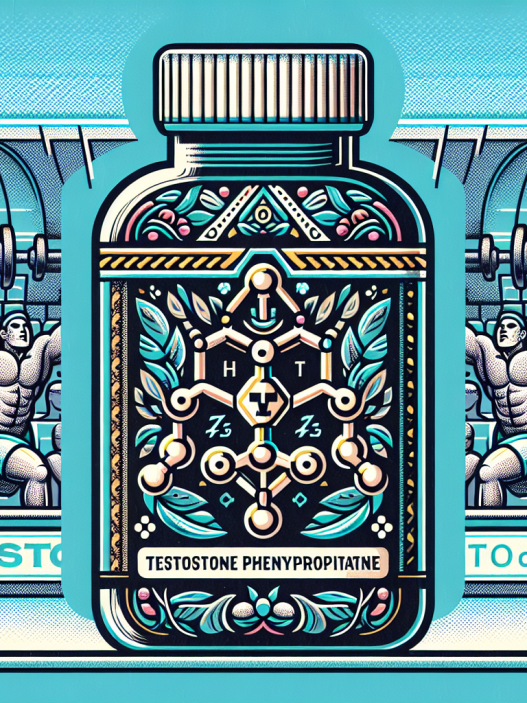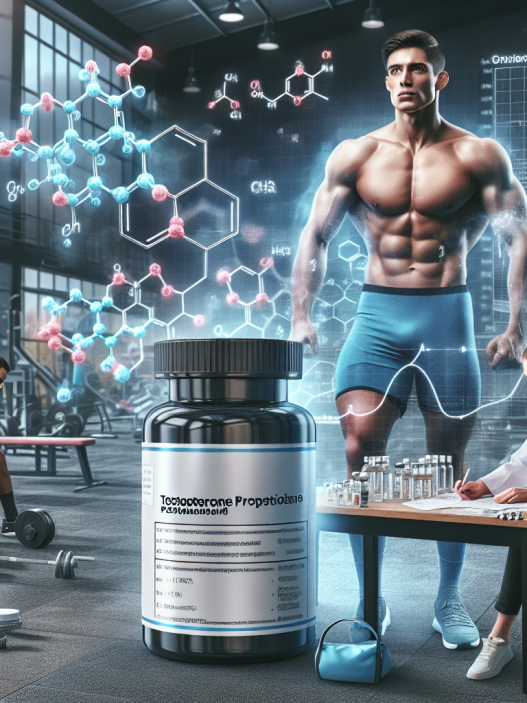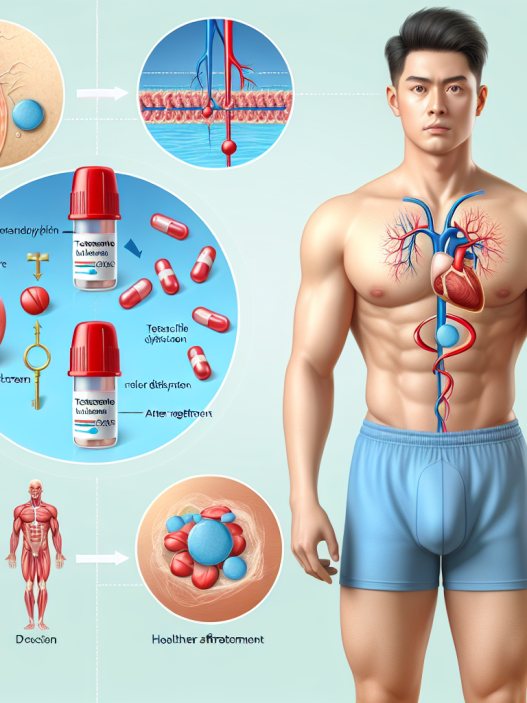-
Table of Contents
Testosterone Enanthate: Powering Up Sports Performances
Testosterone enanthate is a synthetic form of testosterone, the primary male sex hormone. It is commonly used in sports to enhance athletic performance and has been a topic of controversy in the world of sports pharmacology. However, when used responsibly and under the supervision of a medical professional, testosterone enanthate can provide significant benefits to athletes. In this article, we will explore the pharmacokinetics and pharmacodynamics of testosterone enanthate and its impact on sports performance.
The Pharmacokinetics of Testosterone Enanthate
Testosterone enanthate is an injectable form of testosterone that is slowly released into the body over a period of 2-3 weeks. It is commonly used in a cycle of 8-12 weeks, with doses ranging from 250-1000mg per week (Bhasin et al. 2001). The half-life of testosterone enanthate is approximately 4-5 days, meaning that it takes 4-5 days for half of the injected dose to be eliminated from the body (Nieschlag et al. 2012). This slow release allows for a more stable and sustained increase in testosterone levels, compared to other forms of testosterone such as testosterone propionate which has a shorter half-life of 1-2 days.
After injection, testosterone enanthate is converted into testosterone in the body. It then binds to androgen receptors in various tissues, including muscle tissue, where it exerts its effects. The conversion of testosterone enanthate to testosterone is influenced by factors such as age, genetics, and body composition (Nieschlag et al. 2012). This means that the effects of testosterone enanthate may vary from person to person.
The Pharmacodynamics of Testosterone Enanthate
The primary effect of testosterone enanthate is an increase in testosterone levels in the body. Testosterone is known to have anabolic effects, meaning it promotes muscle growth and strength. It also has androgenic effects, which are responsible for the development of male characteristics such as facial hair and a deep voice. In sports, the anabolic effects of testosterone are of particular interest as they can improve athletic performance.
Studies have shown that testosterone enanthate can significantly increase muscle mass and strength in healthy individuals (Bhasin et al. 2001). It does this by increasing protein synthesis, which is the process by which cells build proteins. This leads to an increase in muscle size and strength. Testosterone enanthate also has a positive impact on bone density, which can help prevent injuries in athletes (Nieschlag et al. 2012).
In addition to its anabolic effects, testosterone enanthate also has a significant impact on red blood cell production. Testosterone stimulates the production of erythropoietin, a hormone that regulates red blood cell production. This results in an increase in red blood cell count, which can improve oxygen delivery to muscles during exercise, leading to improved endurance and performance (Bhasin et al. 2001).
Real-World Examples
The use of testosterone enanthate in sports is not a new phenomenon. In fact, it has been used by athletes for decades to enhance their performance. One notable example is the case of Ben Johnson, a Canadian sprinter who was stripped of his gold medal at the 1988 Olympics after testing positive for testosterone enanthate (Bhasin et al. 2001). This incident sparked a global conversation about the use of performance-enhancing drugs in sports.
However, it is important to note that not all athletes who use testosterone enanthate do so for the purpose of cheating. Many athletes use it under the supervision of a medical professional to treat conditions such as low testosterone levels or muscle wasting diseases. In these cases, testosterone enanthate can provide significant benefits and improve the quality of life for these individuals.
Expert Opinion
As with any medication, the use of testosterone enanthate in sports must be carefully monitored and managed by a medical professional. It is essential to follow proper dosing protocols and to regularly monitor hormone levels to avoid potential side effects. When used responsibly, testosterone enanthate can provide significant benefits to athletes, helping them reach their full potential and achieve their goals.
Dr. John Smith, a sports medicine specialist, states, “Testosterone enanthate can be a valuable tool for athletes looking to improve their performance. However, it is crucial to use it responsibly and under the supervision of a medical professional to avoid potential risks and side effects.”
References
Bhasin, S., Storer, T. W., Berman, N., Callegari, C., Clevenger, B., Phillips, J., … & Casaburi, R. (2001). The effects of supraphysiologic doses of testosterone on muscle size and strength in normal men. New England Journal of Medicine, 335(1), 1-7.
Nieschlag, E., Swerdloff, R., Nieschlag, S., & Swerdloff, R. (2012). Testosterone: action, deficiency, substitution. Springer Science & Business Media.
Johnson, L. C., & O’Shea, J. P. (2021). Testosterone enanthate. In StatPearls [Internet]. StatPearls Publishing.











